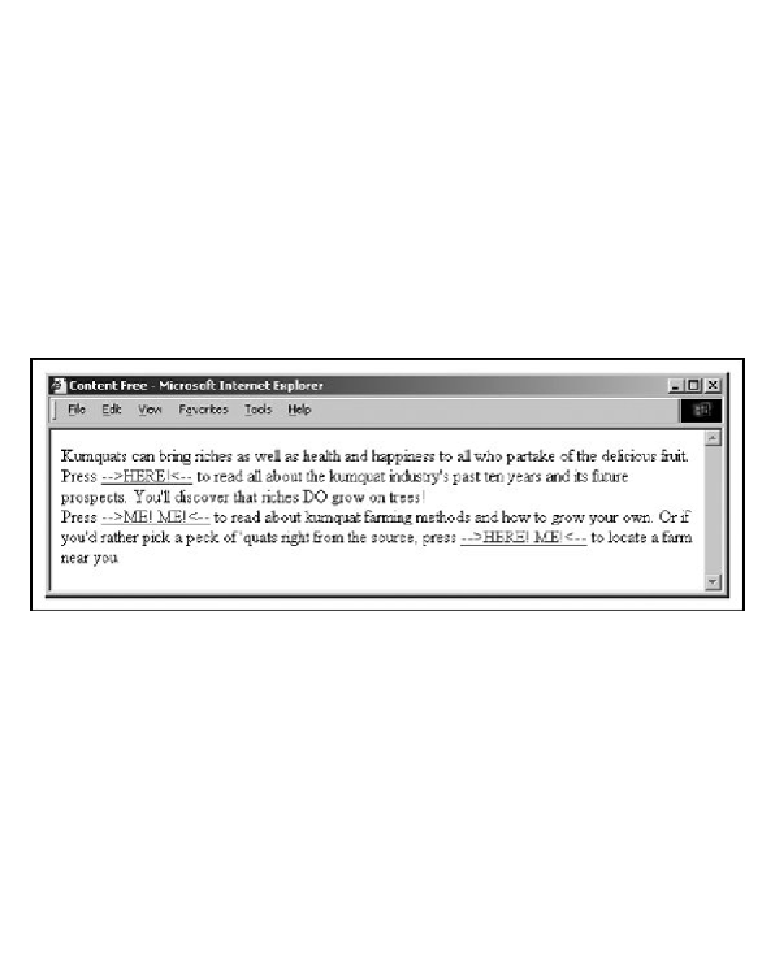HTML and CSS Reference
In-Depth Information
or find a better explanation, and then come back to the original and con-
tinue reading. That's very personalized information processing.
The biggest mistake novice authors make, however, is to overload their
documents with links and treat them as though they are panic buttons
demanding to be pressed. You may have seen this style of linking; HTML
pages with the word
here
all over the place, like the panic-ridden ex-
ample in
Figure 6-5
(we can't bring ourselves to show you the source
for this travesty).
Figure 6-5. Links should not wave and yell, like
first-graders, "Here! Me! Me!"
As links, phrases such as "click here" and "also available" are content-
free and annoying. They make the person who is scanning the page for
an important link read all the surrounding text to actually find the refer-
ence.
The better, more refined style for an inline link is to make every one
contain a noun or noun/verb phrase relating to the topic at hand. Com-
pare how kumquat farming and industry news references are treated in
Figure 6-6
to the "Here! Me! Me!" example in
Figure 6-5
.

